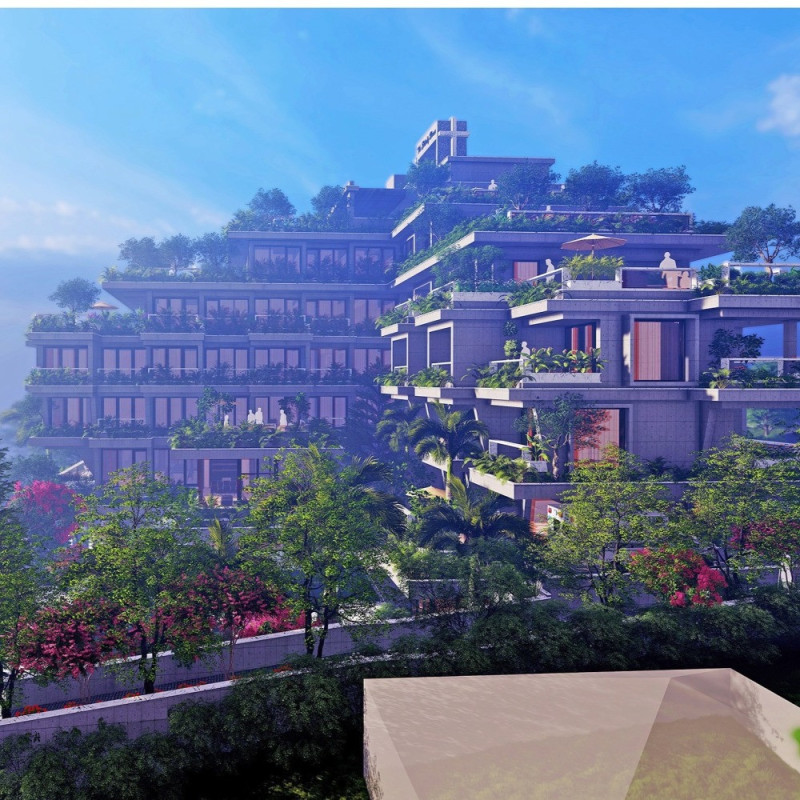5 key facts about this project
The facility serves multiple functions, combining private residential areas with communal spaces to encourage interaction among residents. The layout is structured in a terraced formation, allowing for optimal daylight and views from every room. This design choice not only enhances the aesthetic quality of the living environment but also contributes to the residents’ mental health by providing ample opportunities for connection with nature.
Key components of the project include a range of communal facilities such as dining halls, recreational areas, and gardens, all designed with accessibility in mind. The smooth flow between spaces is a crucial aspect of the architectural design, allowing residents to navigate the facility effortlessly. Materials have been carefully selected to balance durability with warmth; reinforced concrete provides structural integrity while natural wood imparts a sense of comfort and homeliness. The use of glass is strategic, promoting transparency and visual connections to the external environment, thereby creating a sense of openness.
One of the unique design approaches adopted in this project is the emphasis on green spaces. Landscaped terraces and gardens are integrated into the overall layout, allowing residents to engage with nature, whether through planned gardening activities or simply enjoying the calming views from their private balconies. This interaction with the environment is not only essential for physical relaxation but also plays a significant role in the therapeutic aspects of living in such facilities.
The project also incorporates modern technological solutions to enhance the care provided to residents. This includes the installation of health monitoring systems and telemedicine access, enabling more personalized care strategies while ensuring the residents maintain their independence. This blend of traditional caregiving and contemporary technology reflects an understanding of the diverse needs of the senior population.
The geographical location of the facility further enhances its design principles. Set against a backdrop of scenic valleys and greenery, the structure makes the most of its surroundings, creating a seamless transition between interior and exterior spaces. This connection not only beautifies the environment but also impacts residents’ overall happiness and quality of life.
In summary, this elderly care facility stands as an exemplary model of architecture designed with the well-being of its residents in mind. By strategically considering layout, materiality, accessibility, and community engagement, the project addresses essential aspects of elderly living. To gain deeper insights into this architectural endeavor, you are encouraged to explore the architectural plans, architectural sections, and architectural designs that illustrate the thought process behind various architectural ideas implemented in this project.


























